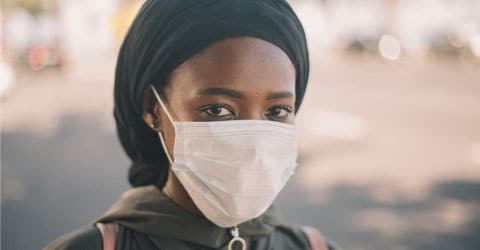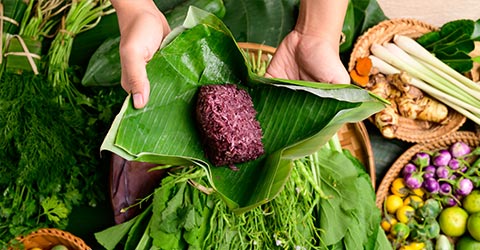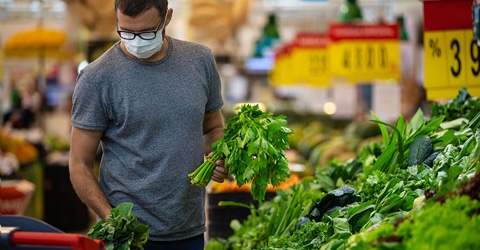

My heart broke when I saw the photo of Honestie Hodges, and learned of her death from COVID-19 at the age of 14. It broke because she reminded me of so many African American adolescents, full of such potential, that I have worked with in my life. My heart also broke because Honestie represents the tragic confluence of two major issues our nation has confronted in 2020: 1) a pandemic with inequitable impact and 2) the use of excessive police force in minority communities. Three years ago, a video in which Honestie was handcuffed by police at age 11 while pursuing another suspect went viral and led to public outcry for changes of police tactics toward youth.
I oddly (or perhaps obviously?) thought again of Honestie and COVID as I watched the film Hillbilly Elegy on Netflix. The film is based on the memoir of the same name by J.D. Vance, a graduate of Yale Law School who grew up in southern Ohio in a family challenged by lack of opportunity and substance abuse, with roots in Appalachian Kentucky. Having grown up in a white working-class family in a depressed former steel town in northern Appalachia, and having gone on to attend an Ivy League law school, the movie resonated with me.
Throughout my life, I have seen the same extreme challenges in working-class, poor black communities as in working-class, poor white communities. Both communities are challenged with lack of stable economic opportunity, lack of upward mobility, family stressors, substance abuse, poor nutrition, and consequent higher levels of chronic illness.[1] Of course, we have seen this year the cumulative effects of baseline community inequality in the disproportionate effect of COVID-19 on the African American community. The strength and energy of the Black Lives Matter movement this year may be understood as not only targeted protest against police brutality, but also frustration with the pandemic as yet another example of how minority communities bear the disproportionate brunt of societal challenges. As of November 20, 2020, more than 46,000 Black Americans have died of COVID-19, and Black, Indigenous, and Latin Americans have death rates three times that of white Americans from the virus.[2]
However, the picture is more complicated when we look beyond race. Researchers using statistical regression analysis to understand the impact of different variables have found that lower income levels had a greater impact than race on COVID-19 infection and death rates in New York City.[3] In another multi-regression analysis, researchers found the counter-intuitive result that, when controlling for population density, rural counties have had greater rates of infection than urban areas, and that mostly minority low-income rural counties had higher rates of infection and death than mostly white low-income rural communities—but that both communities had substantially higher infection rates than higher income urban and suburban communities.[4] In other words, low-income minority communities have been devastated the most by COVID-19, but low-income white communities have also been hit very hard.
And, as a paper in The New England Journal of Medicine points out, there is a clear nexus between income, nutrition, and the pre-existing conditions such as obesity, diabetes, and heart disease which increase probabilities for COVID-19 infection.
Though the factors underlying racial and ethnic disparities in COVID-19 in the United States are multifaceted and complex, long-standing disparities in nutrition and obesity play a crucial role in the health inequities unfolding during the pandemic.[5]
The article notes that poor nutrition has become the leading underlying cause of death in the United States and that, although diet has improved among the middle and upper classes, the diet of low-income communities is, overall, worsening. Poor nutrition not only causes chronic illness, increasing vulnerability to COVID-19, it also directly reduces immune response. A traditional Western Diet high in saturated fats (found mostly in meat and dairy products, but also in coconut products), sugars, and refined carbohydrates, suppresses the body’s adaptive immunity and thus also its ability to combat viruses.[6]
On the other hand, nutrition experts note that an optimally healthy whole food, plant-based (WFPB) diet can have the opposite effect—bolstering our immune responses. Dr. Will Bulsiewicz’s book Fiber Fueled describes how a WFPB diet rich in leafy green vegetables increases the diversity of the gut microbiota, which strengthens the immune system. And nutrition researcher and best-selling author T. Colin Campbell, PhD, outlines the scientific case for using plant-based nutrition to flatten the COVID-19 curve.[7]
Of course, public health issues are extremely complex with multiple shifting causes. In addition to nutrition and illness disparities, the inequitable distribution of COVID-19 is undoubtedly also influenced by unequal access to healthcare and educational opportunity, as well as other structural issues. Moreover, focusing on nutrition and illness as causes of COVID inequalities can too easily cross the line into reinforcing stereotypes and victim blaming.[8] There is a fine line between fault and causation. I have a history of obesity, poor diet, and prescription painkiller dependence, and so I have no aspersions to cast. But I have also experienced great healing and life flourishing after adopting a WFPB diet, and I think such an approach has much to offer in addressing inequality. Indeed, when we speak about structural racism and inequality, I think changing our food policies and food culture, and providing more scientifically-based information regarding nutrition, must be top priorities.
But to do so we have to allow for American complexity. Not only do we tend to see issues as black and white, we tend also to see things as only red or blue. As the summer and autumn saw the focal point of the American pandemic shift to the South, Midwest and West, the prevailing narrative seems to have been that it was a political issue regarding areas in which people refused to wear masks and socially distance. Yet analysis shows that, like nutrition and illness, masking and social distancing are more influenced by income than anything else.[9] Lower rates of social distancing are undoubtedly influenced by the higher proportion of essential workers in low-income areas, but the lower mask rates indicate that other currents are also at play.[10]
Of course, large-scale behaviors during a stressful time will have multifarious causes. Income, gender, politics, and geography all most likely play a role in social distancing and mask wearing. Yet the correlation of social distancing and mask wearing and income matches my experience working in African American, Latino, and white working-class areas. These communities share some general characteristics that may translate to higher-risk pandemic behavior: 1) a lower level of social trust, resulting in less compliance with broader social norms; 2) misinformation being promulgated from levers of power; and 3) dealing with high levels of daily stress and historical trauma that cause “differences in components that drive choice under uncertainty: access to information, mapping of information into subjective probabilities of outcomes and risk preferences, and constraints affecting capacity or ability to respond.”[11]
The disproportionate impact of COVID-19 makes it clear and imperative that both during the pandemic, and beyond, we dedicate ourselves to a movement to empower nutritional improvements in rural and urban low-income communities. This will require the sharing of scientific information, but that alone will not be sufficient. I believe we need to build grassroots support in low-income white, Black and Latnix communities to build trust, share information, and provide support for those seeking nutritional improvement. We need to “share, not shame,” as those already without social trust will need to have their traditions respected before they are open to adapt. There will be the moral imperative of proximity, as we get to know and love those in such communities but, undoubtedly, online and virtual tools will also be important and allow a flexible pivot in times of crisis. PlantPure Communities offers one such approach to plant-based nutrition organizing and I encourage you to join a PlantPure pod or start a pod in a low-income community by going to plantpurecommunities.org. We can also work for such nutrition support and education through school districts, non-profits, and government entities. I do not think we can address the great challenges of inequalities in the United States without addressing disparities of nutrition and health. All the financial incentives exist in the world to develop a vaccine (and I hope we do), but transformative changes in nutrition will only happen with sacrifice and long-term vision. COVID-19 has revealed our inequalities with great starkness, but such challenges of inequality will continue long after a vaccine does come.
References
- Bor, Jacob, Cohen, Gregory H., & Galea, Sandra, Population Health in an Era of Rising Income Inequality: USA, 1980-2015. The Lancet, SERIES| AMERICA: EQUITY AND EQUALITY IN HEALTH| VOLUME 389, ISSUE 10077, P1475-1490, APRIL 08, 2017.
- APM Research Lab The Color of Coronavirus: Covid 19 Deaths by Race and Ethnicity in the U.S., November 20, 2020, available at https://www.apmresearchlab.org/covid/deaths-by-race.
- Leopold, Les, Covid-19’s Class War: The Greatest Predictor of Coronavirus Deaths Appears to be Income. The American Prospect, July 28, 2020, available at https://prospect.org/coronavirus/covid-19-class-war-death-rates-income/.
- Chakrabati, Rajashri & Nober, William, Distribution of Covid-19 Incidence by Geography, Race & Income. The Federal Reserve Bank of New York: Liberty Street Economics, June 15, 2020, available at https://libertystreeteconomics.newyorkfed.org/2020/06/distribution-of-covid-19-incidence-by-geography-race-and-income.html.
- Belanger, Matthew, Hill, Michael, Angelidi, Angeliki, Dalagaga, Maria, Sowers, James, & Mantzoros, Christos, Covid-19 and Disparities in Nutrition and Obesity. The New England Journal of Medicine, N Engl J Med 2020; 383:e69, September 10, 2020, available at https://www.nejm.org/doi/full/10.1056/NEJMp202126.
- Butler, Michael, & Barrientos, Ruth, The Impact of Nutrition on Covid-19 Susceptibility and Long-Term Consequences. Brain Behav Immun. 2020 Jul; 87: 53–54, available at https://www.ncbi.nlm.nih.gov/pmc/articles/PMC7165103/.
- Campbell, T. Colin, Our Most Important Defense Against COVID-19: Finding Hope Through Scientific Evidence (Part 1). Plantpure Communities, available at https://plantpurecommunities.org/defense-against-covid-19/.
- Strings, Sabrina, It’s Not Obesity, It’s Slavery: We Know Why Covid-19 is Killing So Many Black People. The New York Times, May 25, 2020, available at https://www.nytimes.com/2020/05/25/opinion/coronavirus-race-obesity.html.
- Weill, Joakim, Stigler, Matthieau, Deschenes, Olivia, & Springborn, Michael, Social distancing responses to COVID-19 emergency declarations strongly differentiated by income. Proceedings of the National Academy of Sciences, PNAS August 18, 2020 117 (33) 19658-19660, available at https://www.pnas.org/content/117/33/19658.
- Buchwald, Elisabeth, Why do so many Americans refuse to wear face masks? Politics is part of it — but only part. Marketwatch, June 28, 2020, available at https://www.marketwatch.com/story/why-do-so-many-americans-refuse-to-wear-face-masks-it-may-have-nothing-to-do-with-politics-2020-06-16.
- Weill, et. al.
Copyright 2025 Center for Nutrition Studies. All rights reserved.
Deepen Your Knowledge With Our
Plant-Based Nutrition
Certificate
Plant-Based Nutrition Certificate
- 23,000+ students
- 100% online, learn at your own pace
- No prerequisites
- Continuing education credits






